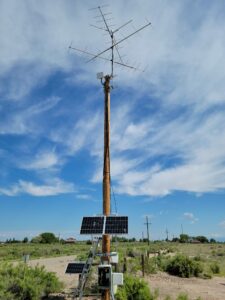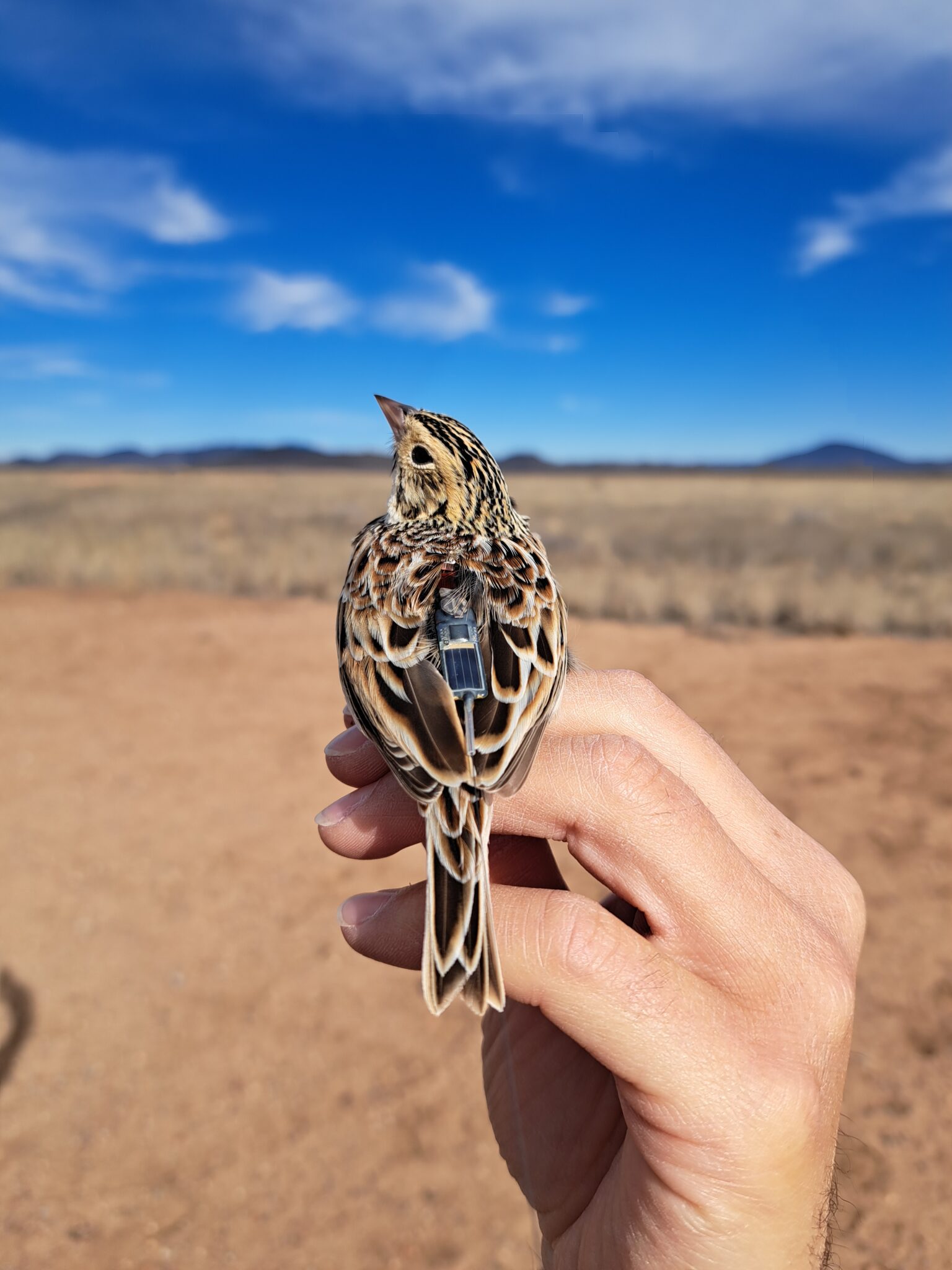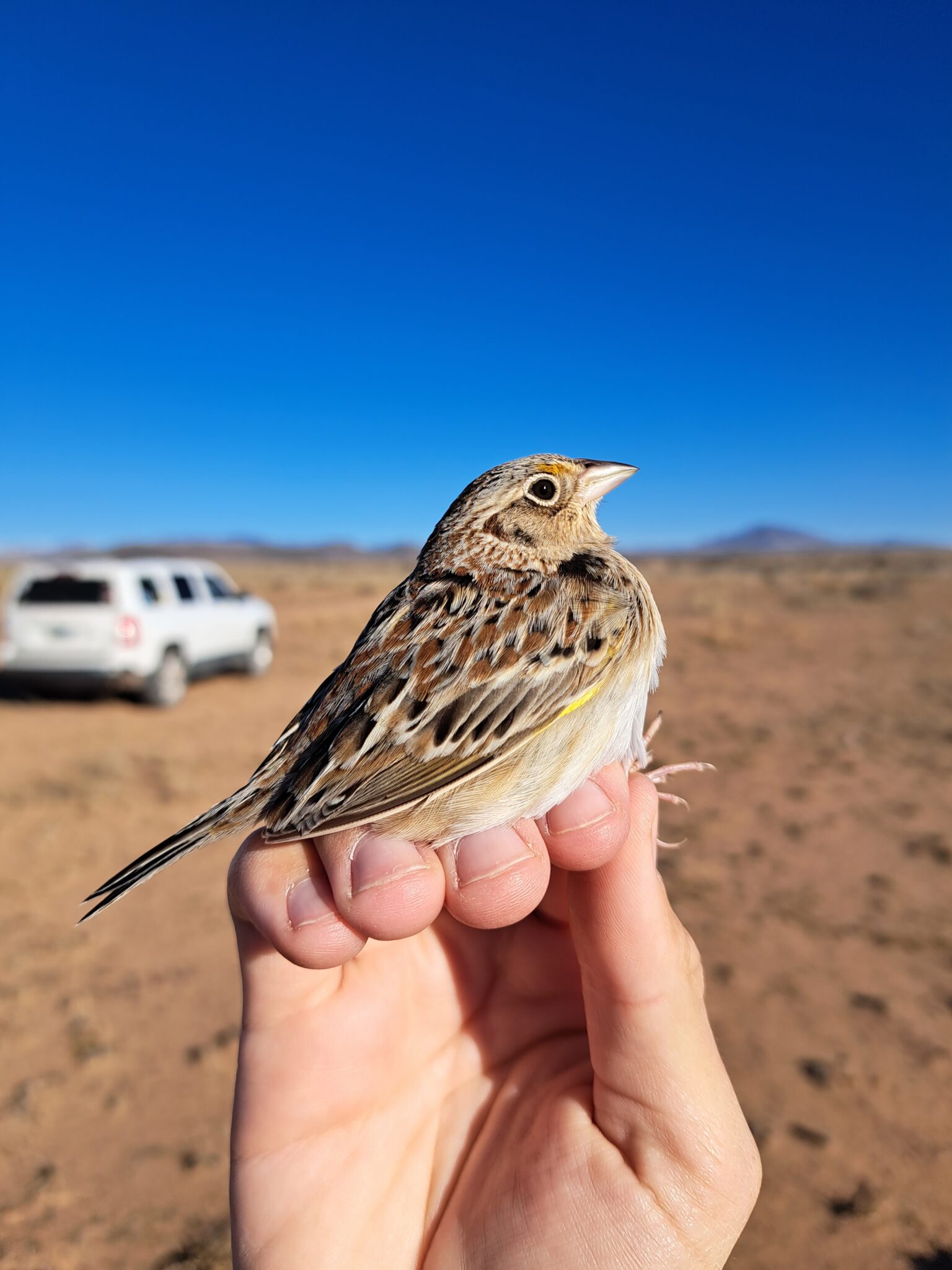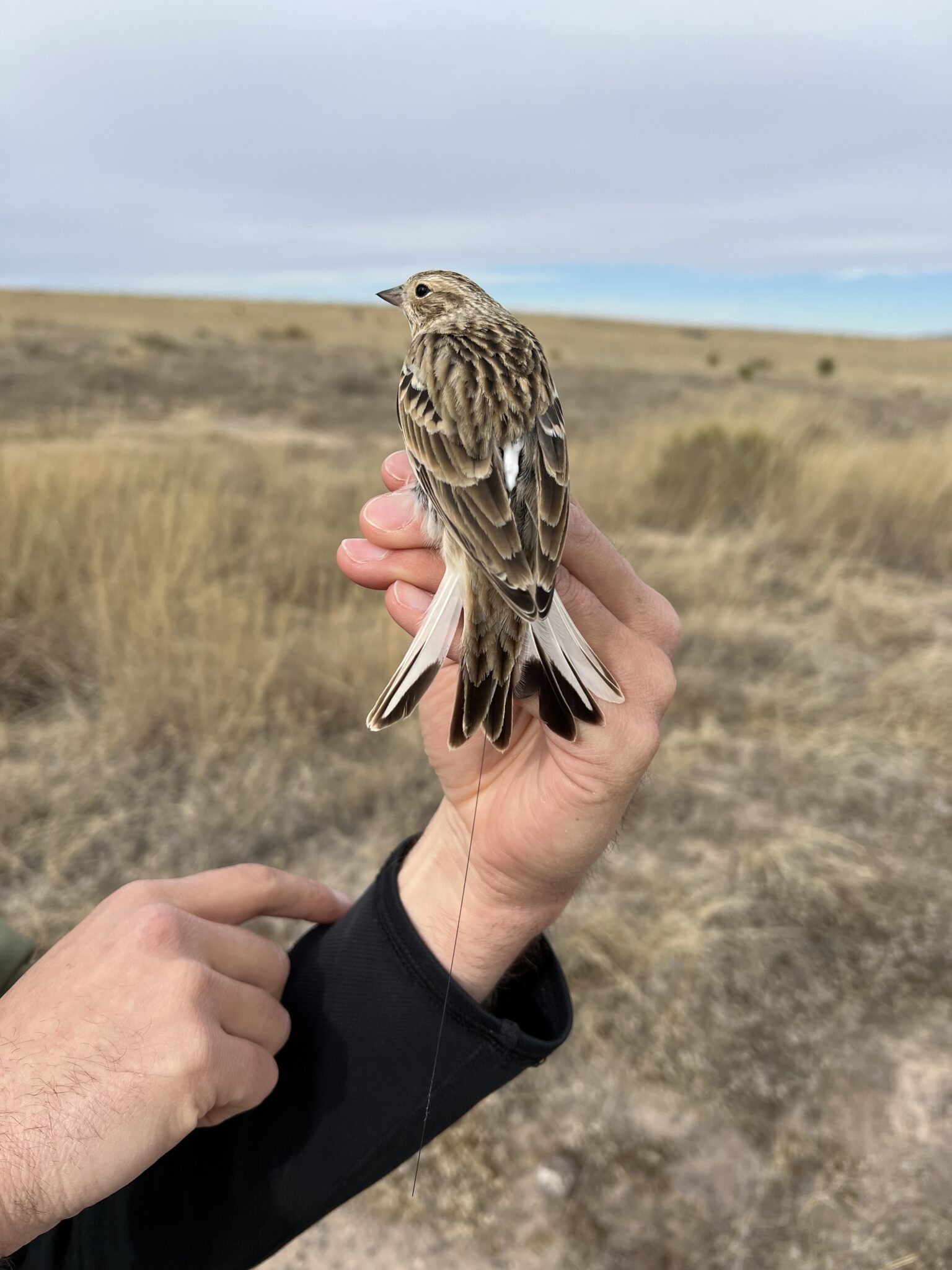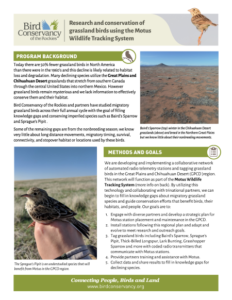Bird Conservancy Motus Network
Bird Conservancy of the Rockies studies grassland bird ecology during different parts of their full annual cycle to develop strategic conservation plans and recover populations. Migration is the biggest knowledge gap with respect to grassland bird ecology. Not much is known about specific routes used by grassland birds, or where they stop to rest and refuel. To fill these knowledge gaps, Bird Conservancy is developing and implementing a collaborative network of automated telemetry stations in the Great Plains-Chihuahuan Desert region, known as the Great Plains-Chihuahuan Desert (GPCD) Motus network. This network will function as part of the Motus Wildlife Tracking Network.
What is Motus?
The Motus Wildlife Tracking System is a global collaborative network of automated radio telemetry stations managed by Birds Canada. It is used in conjunction with small coded radio transmitters that are attached to small animals such as birds, bats, and some insects to study their movement.
Motus stations come in many different shapes and forms, but all contain the same three components: a sensor, an antenna, and a power source. All of our stations are outfitted with Cellular Tracking Technologies’ (CTT) SensorStation, which detects radio transmissions from Motus tags, and which is connected through either WiFi or cellular networks to automatically transfer data to Motus’ servers. The SensorStation is connected to six to eight directional (Yagi) antennas, which help the SensorStation detect the Motus tags, and the whole station is powered by either a solar panel or by plugging directly into an onsite power source.
Bird Conservancy Motus stations from Appleton Whittell Research Ranch in Elgin, AZ, the Alamosa National Wildlife Refuge in Alamosa, CO, and the Crane Trust in Wood River, NE.
Once a tagged animals passes within roughly 15 kilometers of a Motus station, it is detected and logged at that station and transmitted to Motus servers. This allows researchers to track birds across space and time without the need to re-capture individuals. The receiver stations are “open” to receiving data from animals tagged by any researcher across the network footprint so a single station can collect data from any number of species!
Tracking Grassland Birds
Grassland bird populations have declined by half over the past four decades (70-90% decline) due to grassland conversion, climate change, and tree and shrub encroachment, among other stressors. Many of these species use habitat within the GPCD grasslands at some point in their annual cycle. This region stretches from Canada through the Central United States into northern Mexico, and contains the majority of remaining grasslands in North America.
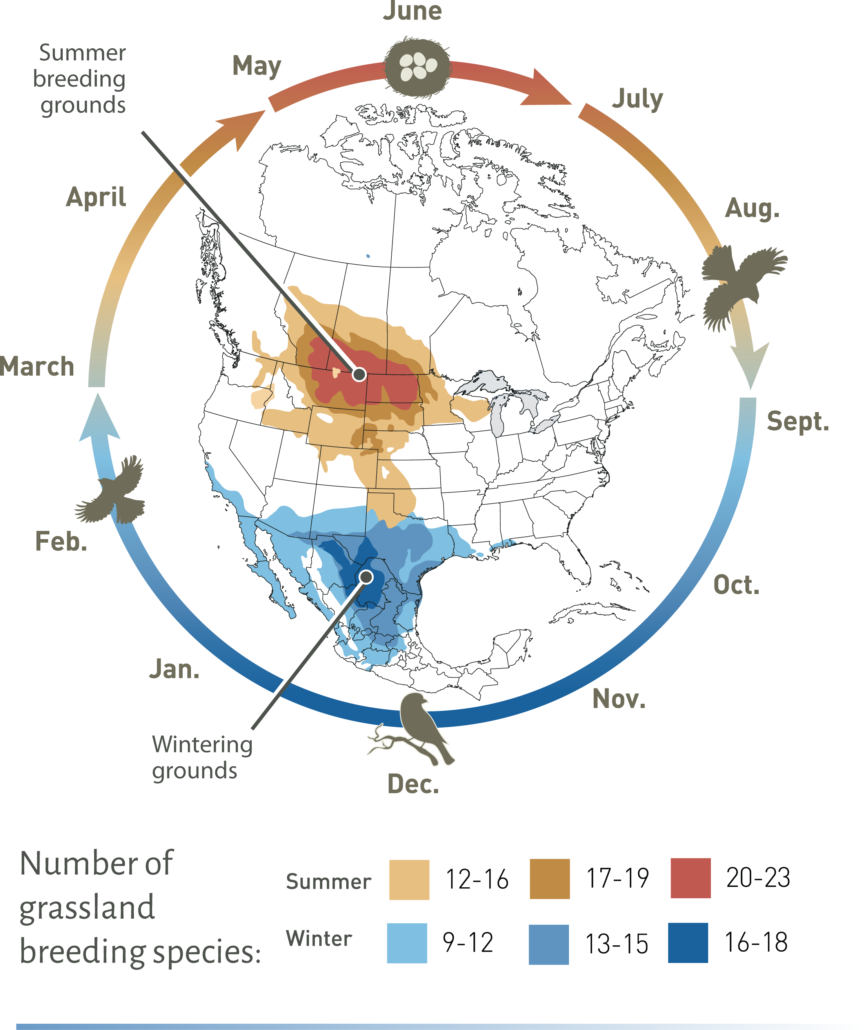
Focal Species within the Great Plains-Chihuahuan Desert (GPCD)
Grassland bird conservation efforts within the GPCD are essential because this region provides key habitat for the most steeply declining grassland species. This includes the Baird’s Sparrow, Thick-billed Longspur, Sprague’s Pipit, Chestnut-collard Longspur, and Grasshopper Sparrow. This suite of species are some of the GPCD network’s highest priority species for tagging and monitoring. The radio tags that are deployed on these grassland birds range from 0.25g-0.75g and can last anywhere from 90 days to the life of the bird depending on the model of tag used. Once a bird has been tagged and released, anytime it comes near a Motus station, its location is recorded and added to the Motus database. The data collected by the GPCD network on these focal species will help scientists better understand their long distance movement, stopover, and habitat use throughout their full annual cycles, which will help conservation practitioners and land managers to more effectively target conservation planning for the species most at risk of decline and extinction.
- Baird’s Sparrow equipped with a radio tag.
- Grasshopper Sparrow.
- Chestnut-collared Longspur equipped with a radio tag.



